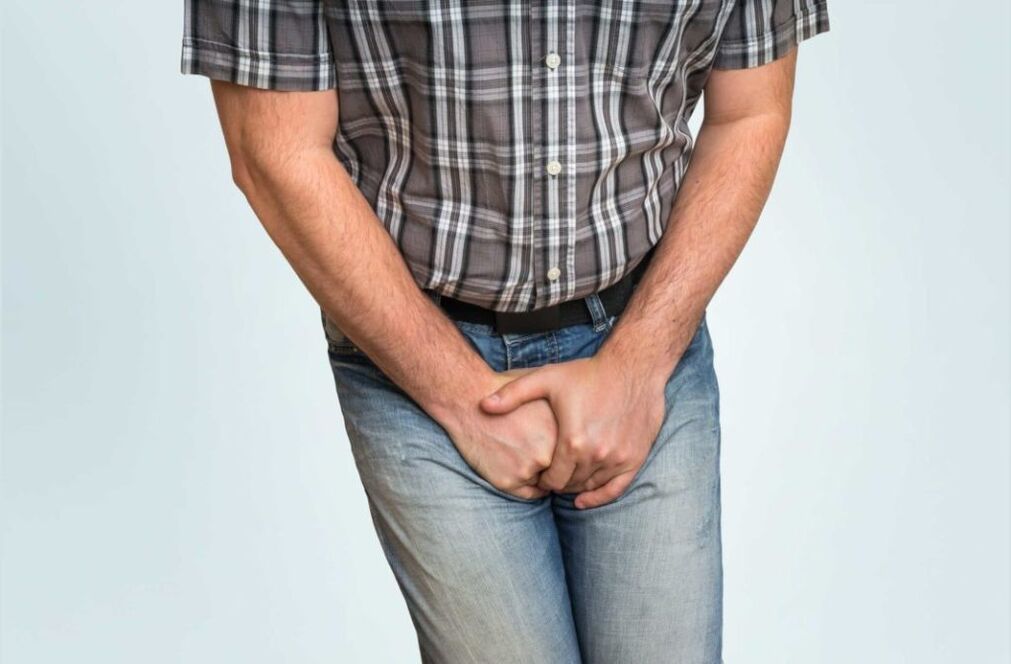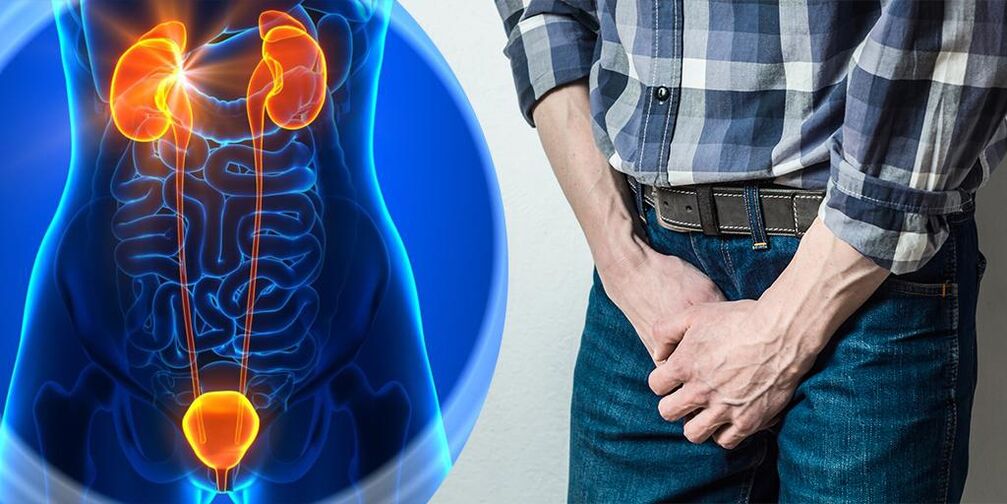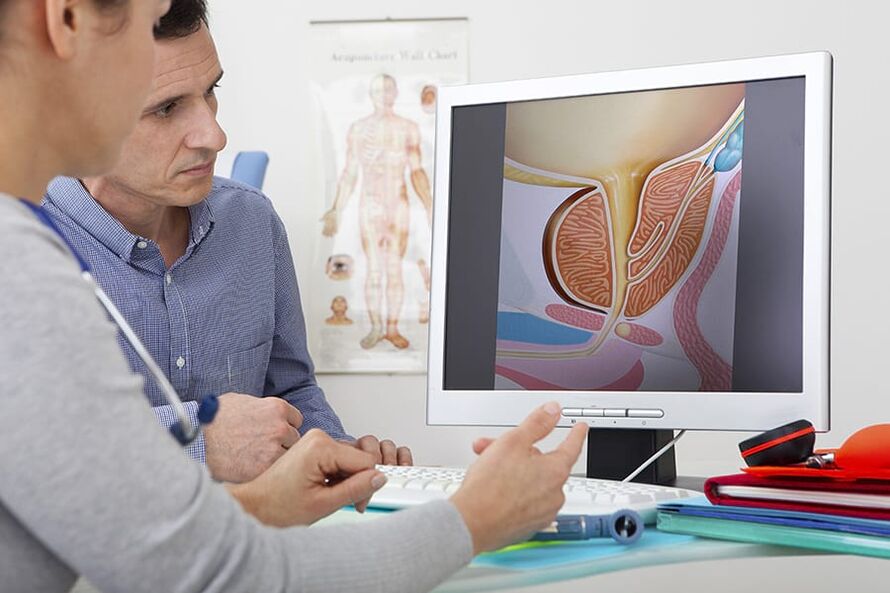Prostatitis is a disease of inflammation of the prostate gland. It is characterized by frequent campaigns in the toilet, penis pain, scrotum, rectum, sexual harassment (erection, early ejaculation, etc. ), Sometimes delayed urine, and blood insurance in the urine. The diagnosis of prostatitis is established by a urologist or other specialist in a typical clinical picture, the results of the rectal study. In addition, prostate ultrasound, bacterial bacterial prostatic secretion and urine are performed. Conservative treatment - antibacterial therapy, immunotherapy, prostate massage, lifestyle correction.

General information
Prostatitis - inflammation of the seed gland (prostate) - prostate. It is the most common disease in the genitourinary system in men. It usually affects the patient aged 25-50. In line with various data, prostatitis suffers 30-85% of men over 30. It may be the abscess of the prostate gland, inflammation of the penis and complement, which threatens infertility. The climb of infection leads to inflammation of the genitourinary system (cystitis, pyelonephritis).
Pathology develops when an infectious agent is inserted, which enters the prostate fabric of the organs of the genitourinary system (urethra, bladder) or from the focus of the inflammation (with pneumonia, colds, tonsilitis, furunculosis).
The cause of prostatitis
Staphylococcus aureus gold (enterococcus), enterobacter (enterobacter), pseudomonas (pseudomonas), proteus (proteus), and klebcelllah, and klebcelllah can act as infectious agents in the acute process. (Klebsiella) and E. coli (E. coli). Most microorganisms belong to the pathogenic flora and cause prostatitis only if there are other predisposing factors. Chronic inflammation is usually caused by Paul with a microbial association.
The risk of developing the disease increases during hypothermia, the presence of infections and certain conditions in the history of congestion in the prostate tissue. The following predisposing factors are distinguished:
- General hypothermia (single or permanent, related to working conditions).
- Inactively, special lifestyles that force one to sit for a long time (computer operators, drivers, and others).
- Constipation persists.
- Typical rhythm violations of sexual activity (excessive sexual activity, prolonged abstinence, incomplete ejaculation during lack of "normal" sexual emotional dye).
- The presence of chronic diseases (cholecystitis, bronchitis) or chronic infectious focus in the body (chronic osteomyelitis, absurd caries, tonsilitis, etc. ).
- Transfer of urological disease (urethritis, cystitis, and others) and sexually transmitted diseases (trichomoniasis, gonorrhea).
- Countries that cause immune system inhibition (chronic stress, irregular and low nutrition, regular sleep deficiency, overtraining in athletes).
It is assumed that the risk of developing pathology increases with chronic intoxication (alcohol, nicotine, morphine). Some studies in modern andrological fields have shown that factors that cause chronic injury (vibration, tremors) in drivers, motorcyclists and cyclists. However, the incredible number of experts believes that all the conditions listed are not the true cause of the disease, but only contribute to the increase in latent inflammation in the prostate tissue.
The role of determinants in the occurrence of prostatitis is played by stagnation in the prostate tissue. Violation of capillary blood flow causes an increase in lipid peroxidation, edema, exudation of prostate tissue and develops conditions for the development of infectious processes.

Symptoms of prostatitis
Acute prostatitis
There are three stages of acute prostatitis, characterized by the presence of clinical pictures and certain morphological changes:
- Catarrhal sharp. Patients complain about fast, often painful, pain in the sacrum and perineum.
- Follicular sharp. The pain becomes more intense, sometimes emitting the anus, increasing during drainage. Urination is difficult, urine flows with thin flow. In some cases, urine delays are observed. Subfebrilite or medium hyperthermia is typical.
- Acute parenchymal. Spoken general intoxication, hyperthermia up to 38-40 ° C, chills. Zuric disorders, usually acute delays in the urine. Sharp pain, pulsating in the perineum. Difficulty in urinating.
Chronic prostatitis
In rare cases, chronic prostatitis is the result of acute processes, however, as a rule, the main chronic course is observed. Temperatures sometimes rise to small values. Patients record poor pain in the perineum, discomfort during urination and water removal. The most characteristic symptoms are rare release from the urethra during water removal. The main chronic form of the disease develops over a significant period of time. He is preceded by blood stagnation in the capillaries, gradually turning into abacterial prostatitis.
Chronic prostatitis is often a complication of the inflammatory process caused by a specific infection agent (chlamydia, ureaplasma, gonococcus). Symptoms of certain inflammatory processes in many cases cover the manifestation of prostate wounds. It may be a bit of an increase in pain during urination, poor pain in the perineum, rare discharge from the urethra during water removal. Little changes in clinical pictures are often unknown to patients.
Chronic inflammation of the prostate gland can be created by burning sensations in the urethra and perineum, dysuria, sexual disorders, increased general fatigue. As a result of potential violations (or fears of these violations) often mental depression, anxiety and irritation. Clinical pictures do not always include all groups of symptoms listed, different from patients and different changes over time. There are three main features of chronic prostatitis syndrome: pain, violations when going to the toilet, sexual harassment.
No pain receptors in the prostate cloth. The cause of pain in chronic prostatitis becomes almost inevitable due to the preservation of abundant pelvic organs in the process of inflammation of the nerve road. Patients complain of pain in various intensity - from weak, pain to strong, breaking sleep. There is a change in the nature of pain (improvement or weakness) with ejaculation, excessive sexual activity or sexual abstinence. Pain emits scrotum, sacrum, throat, sometimes to the lumbar region.

As a result of inflammation in chronic prostatitis, the number of prostate absorbs the urethra increases. The ureter lumen decreases. Patients have frequent urination, feelings of incomplete bladder. As a rule, the dysuric phenomenon is expressed in the early stages. Then, the hypertrophy of the bladder and ureter muscle layer is developing. Symptoms of dysuria during this period are weakened, and again increased during decomposition of adjustment mechanisms.
In the early stages, potential violations can develop, which is shown differently in different patients. Patients can complain of frequent night erections, deleted orgasms or erection deterioration. Accelerated ejaculation is associated with a decrease in central threshold excitation, which is responsible for obtaining orgasm. Pain for ejaculation can lead to a refusal of sexual activity. In the future, sexual harassment becomes clearer. In the future, the impotence develops.
The level of sexual harassment is determined by many factors, including the sexual constitution and the patient's psychological atmosphere. Potential violations and dysuria can be caused by both changes in the prostate gland, and how easy it is to inspire anything. If he has chronic prostatitis, he expects the development of sexual disorders and inevitable urinary tract disorders. Especially often psychogenic disorders in the potential and problems by going to the toilet develop in the proposed and alarming patients.
Complication
In the absence of timely acute prostatitis treatment, there is a significant risk of developing the abscess of the prostate gland. When purulent focus is formed, the patient's body temperature increases to 39-40 ° C and can have a busy character. The duration of heat alternates with chills. The sharp pain in the perineum complicates the urine and causes impossible water.
Growth of edema edema leads to acute urinary delay. In rare cases, spontaneous abscesses open into the urethra or rectum. When opening the urethra, purulent muddy urine appears with an unpleasant spicy odor, when opened in the rectum, the stool contains pus and mucus.
For chronic prostatitis, courses such as waves with prolonged remission periods are characteristic, where inflammation in the prostate continues the latent or manifests itself in very little symptoms. Patients, who have no deviation, often stop treatment, and only change with the development of complications.
The most common complications in the chronic process are inflammation of the penis and the penis complement and inflammation of the seed bubble. The results of this disease are often infertility.
Diagnostics

Clinical picture features facilitates the diagnosis process in acute and chronic prostatitis. Required:
- Prostate rectal study
- Prostate gland secretion fence to determine the sensitivity of microflora (sowing prostate secrets and planting urine into bacteria).
- Prostate ultrasound to identify structural changes (tumors, cysts, adenomas) and the differentiation of prostatitis from other diseases
- Spermograms to exclude or confirm the development of infertility.
Treatment of prostatitis
Acute Prostatitis Treatment
Patients with acute process without complications undergo treatment with urological patients. With severe intoxication, suspicion of purulent processes, hospitalization is shown. Antibacterial therapy is performed. Medicines are selected taking into account the sensitivity of the infectious agent. Antibiotics are widely used that can penetrate well into prostate tissue (ciprofloxacin, and others).
With the development of acute urinary delay, against the background of prostatitis, they use special tube installation, and not uretral catheter, as there is a danger of forming prostate abscesses. With the development of abscesses, the opening of endoscopic or uretral abscess is performed.
Treatment of chronic prostatitis
Chronic prostatitis treatment should be complex, including etiotropic therapy, physiotherapy, immune correction:
- Antibiotic therapy. Patients are prescribed long-term antibacterial courses (within 4-8 weeks). The selection of types and doses of antibacterial drugs, as well as determination of the duration of treatment individually. This drug is selected based on microflora sensitivity based on urine cultivation and prostate secret.
- Prostate massage. The gland massage has a comprehensive effect on the affected organs. During the massage, the secret of inflammation accumulated in the prostate gland is squeezed into the channel, then enters the urethra and removes from the body. This procedure improves blood circulation in the prostate, which allows to minimize the stagnation and provide the best antibacterial penetration into the affected organ tissue.
- Physiotherapy. To improve blood circulation, laser exposure, ultrasonic waves and electromagnetic vibrations are used. If it is impossible to perform physiotherapeutic procedures, the patient is prescribed warm medical microclism.
In chronic inflammation, long, the consultation of an immunologist is indicated for the choice of immunocorrogative therapy tactics. Patients are given suggestions for lifestyle changes. The introduction of certain changes to the patient's lifestyle with chronic prostatitis is therapeutic and preventive measures. Patients are recommended to normalize sleep and awake, to create a diet, and to perform moderate physical activity.

Forecast and prevention
Acute prostatitis is a disease that has a tendency to chronic. Even with adequate treatment, more than half a patient, chronic prostatitis is the result. Recovery is far from possible, however, with proper sequential therapy and compliance with the doctor's recommendation, it is possible to eliminate unpleasant symptoms and achieve long remission in the chronic process.
Prevention consists of eliminating risk factors. It is necessary to avoid hypothermia, alternative work and with the duration of physical activity, and eating regularly and completely. With constipation, laxatives should be used. One of the precautions is the normalization of sexual life, as both excessive sexual activities and sexual abstinence are risk factors in the development of prostatitis. If the symptoms of urological or sexual disease appear, you should consult your doctor on time.
























